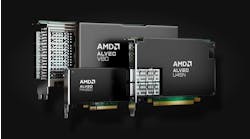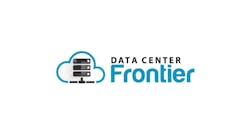Are Your Data Center Monitoring Systems Hiding Critical Energy Capacity?
The break-neck adoption of AI across every industry underscores the urgency for high-performance datacenter capacity. Yet this demand introduces a significant challenge: power grids were simply never designed to handle exponential growth – both from the supply and delivery side. While future generation AI data centers capable of supporting 250kW+ racks are in the pipeline - they’re years away from being operational due to regulatory hurdles compounded by locations where energy capacity can be found or reliably generated.
While data centers have always been power-intensive, AI has fundamentally altered the landscape. AI pioneers are already recognizing where critical resources beyond GPUs will play a crucial role, with energy being the most significant concern. Technology leaders are very aware of this reality. During a recent Dwarkesh Podcast, Meta's Mark Zuckerberg emphasized that energy production constraints, not GPU availability, have become the primary limitation to scaling AI infrastructure. Data centers simply can't extract more power from current grids overnight, regardless of how many processing units they can procure.
So, What Can Data Center Operators Do Right Now?
How can data center operators meet the skyrocketing demand for AI using today’s infrastructure over the next 5-10 years until new power generation facilities come online?
One commonly discussed approach is to leverage the demand-response strategies that power utilities have perfected over the past two decades. In essence, when energy demand spikes in a particular area, utilities request voluntary reductions in usage and offer incentives for compliance. This strategy helps extend the lifespan of existing production facilities and, in many cases, postpones the need for significant capital investments.
Taking a page from the same book, data center capacity for new AI buildouts can be realized if operators were able to pinpoint exactly where energy is required to support critical IT workloads while eliminating power to non-essential loads based on actual demand.
Data Center Monitoring: Gaining Granular Insight
Here's the good news: the tools already exist. Modern data centers are equipped with a litany of discrete monitoring systems providing real-time insights into energy consumption. The problem? Most of these systems remain stand-alone islands of disconnected information. Due to the complexity of accessing this data, most of those islands are rarely visited. There are simply so many disparate systems, using various access mechanisms, that operators rarely use the available information for operational planning – or energy optimization.
But it doesn’t have to be this way. These systems, albeit dissimilar and unconnected, could be connected and normalized. Network protocols can be converted, and units of measure standardized. Once you establish a real-time, granular view of energy consumption and know where workloads are active, it becomes a simple matter of putting rules in place to remove underutilized loads when they’re not needed.
Beyond Basic Monitoring: Active Intelligence
What most data centers call “monitoring” today is actually passive observation – collecting data that sits unused in separate systems. True, active monitoring goes beyond simple data collection to create a unified platform that normalizes information across systems, applies intelligent analysis, and enables prioritized and automated responses.
This intelligence-driven approach delivers what fragmented systems cannot: the ability to correlate power consumption with actual workloads, predict future demand patterns, and automatically optimize resource allocation. Unlike traditional monitoring which simply reports what's happening, active monitoring creates a feedback loop that continuously improves efficiency.
This ultimately increases the utilization of online computing resources, conserving energy at the macro level. It allows workloads to be shifted, and non-critical tasks moved to off-peak hours. It enables cooling systems to precisely meet target temperatures and dynamically recommend adjusts in an automated fashion. And it even allows on-site power generation to be activated during peak periods when grid power would otherwise be unavailable or too expensive.
The Time for Active Monitoring is Now
We’ve been talking about monitoring for decades, but never has it been this critical. With AI now at the center of every data center discussion, every watt counts as data centers hit their energy limits. For the next 5-10 years, data centers’ success hinges on refining the operational abilities of existing facilities – not just building new ones.
Active, intelligent monitoring represents the most powerful, yet underutilized, tool in our arsenal. By transforming disconnected data into actionable intelligence, we can extend data center lifespans while unlocking hidden capacity for AI innovation. The future of computing doesn’t just require more power – it demands that we become smarter about the power we already have.

Michael Skurla
Michael Skurla, co-founder of Radix IoT, has more than 25 years’ experience with critical infrastructure sectors’ control automation and building technology product design with Fortune 500 companies.
Radix IoT empowers data centers worldwide with actionable data insights and tools needed to proactively manage their operations and better project their bottom line. Learn more about Data Center optimization strategies for navigating unprecedented AI demands in our latest eBrief: "Powering the AI Revolution.”






